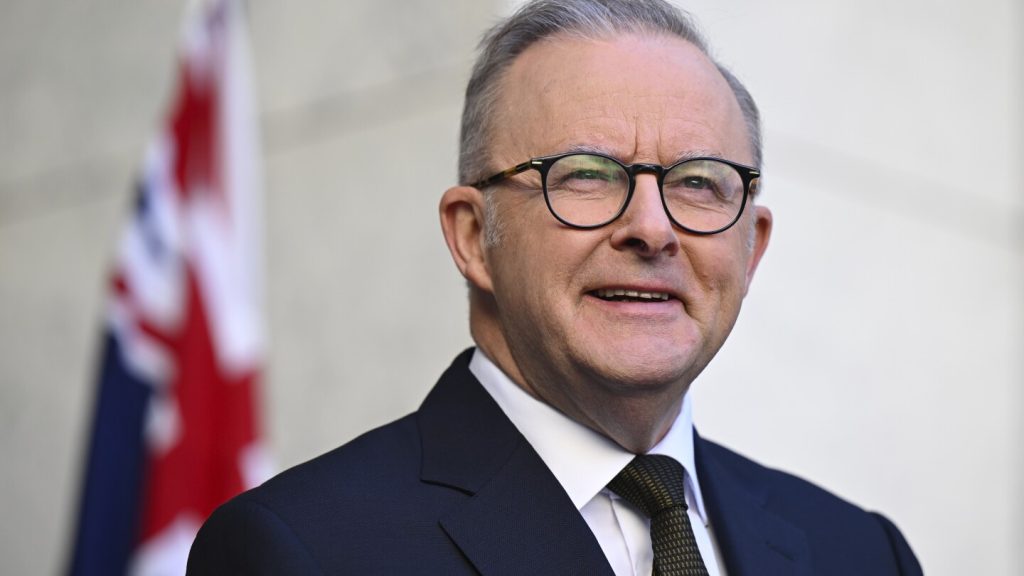U.S.-Australia Trade Relations: A New Chapter in Cooperation
U.S. President Donald Trump has signaled a willingness to reconsider tariff exemptions for Australian steel and aluminum imports, following a productive telephone conversation with Australian Prime Minister Anthony Albanese on Tuesday. The discussion, which was scheduled prior to Trump’s announcement of new tariffs on steel and aluminum imports on Monday, highlighted the strong bilateral relationship between the two nations. Trump emphasized that the U.S. enjoys a trade surplus with Australia, which he cited as a key reason for considering the exemption. “We actually have a surplus,” Trump remarked during a press briefing in the Oval Office. “It’s one of the only countries which we do. And I told [Albanese] that that’s something that we’ll give great consideration to.” This statement underscores the administration’s recognition of the mutual benefits of maintaining a balanced trade relationship with Australia.
Prime Minister Albanese actively lobbied for the exemption during the call, arguing that Australia’s steel and aluminum exports to the U.S. are relatively modest and play a critical role in supporting American industries. Albanese expressed optimism about the outcome of the discussion, stating that both leaders had agreed on a joint public statement: “The U.S. president agreed that an exemption was under consideration in the interests of both of our countries.” The prime minister described the conversation as “very positive and constructive,” reflecting the enduring strength of the U.S.-Australia partnership.
Historical Context: Australia’s Previous Tariff Exemptions
This is not the first time the U.S. has considered tariff exemptions for Australia. During Trump’s first administration, Australia was granted an exemption from the 2018 tariffs on steel and aluminum. The exemption was based on the country’s long-standing trade deficit with the U.S., dating back to the mid-20th century, as well as the significant contributions of Australian companies to the American economy. For instance, BlueScope, a leading Australian steelmaker, employs thousands of workers in the U.S., further solidifying the economic ties between the two nations.
Albanese also highlighted Australia’s minor market share in the U.S., emphasizing that the country’s exports do not pose a competitive threat to American industries. Instead, they serve as a complementary force, supporting key sectors such as defense and manufacturing. This argument resonates with the broader narrative of mutual economic and strategic benefits that have defined the U.S.-Australia relationship for decades.
The AUKUS Agreement and Defense Ties
During the call, Albanese also brought up the AUKUS (Australia, U.K., and U.S.) agreement, a landmark pact inked with the Biden administration in 2021. Under this deal, Australia is set to acquire a fleet of submarines powered by U.S. nuclear technology, marking a significant milestone in the countries’ defense collaboration. Albanese noted that steel and aluminum are essential components for the U.S.-Australia defense industries, further reinforcing the case for tariff exemptions.
The prime minister also announced that Australia had made the first of six $500 million payments to the U.S. under the AUKUS framework, designed to bolster American submarine-building capacity. This financial commitment underscores Australia’s dedication to strengthening bilateral defense ties and demonstrates the symbiotic nature of the relationship. By exempting tariffs on steel and aluminum, the U.S. would not only support its ally’s defense capabilities but also ensure the continued success of joint initiatives like AUKUS.
Broader Trade Policy and Global Implications
The decision to reconsider tariffs on Australian steel and aluminum comes amidst a broader shift in U.S. trade policy under Trump’s leadership. In recent days, the president has sought to reset tariffs on all imports to align with the levels imposed by other countries. This move is part of a larger effort to address what Trump perceives as unfair trade practices and to protect American industries.
The announcement of increased tariffs on steel (now set at 25%) and aluminum (also raised to 25%) has sparked reactions from trading partners worldwide. China, for instance, has implemented retaliatory tariffs, while Canada and Mexico have secured a temporary reprieve until March 1. These developments create a complex geopolitical landscape, with implications for global trade flows and economic stability. However, the U.S.-Australia dialogue offers a ray of hope for constructive engagement, demonstrating that even in turbulent times, nations can find common ground through negotiation and cooperation.
A Strong Bilateral Relationship Moving Forward
The positive tone of the Trump-Albanese conversation reflects the resilience of the U.S.-Australia partnership, which has weathered numerous challenges over the years. This was Albanese’s second call with Trump since the president’s election, and the prime minister described the relationship as being “in good shape.” Such optimism bodes well for future collaborations, particularly as both nations navigate the complexities of a rapidly evolving global economy.
By considering tariff exemptions for Australia, the U.S. has the opportunity to strengthen its alliance with a trusted and valuable partner. The mutual benefits of this decision extend beyond economics, encompassing defense, security, and shared strategic interests. As both countries continue to work together, their collaboration will serve as a model for effective international cooperation in addressing the challenges of the 21st century.








